When I first spotted Nabiya in the newly published collection from Tulika, I felt that faint tingle of happiness that awakens in me when in the presence of a potentially good book. The water colour cover illustrations, the setting of a ‘basti’, the back of an female character with a football in hand, all evoked in me the feeling that this will be a special book.
I chose it as a read- aloud after reviewing it, casting it aside and then picking it up again. Lesson planning for Nabiya was hard, simply because the context, the setting, the experience is what all our children on MOP experience. Was it too close to home ? Are we ready to move out into the wider world and will this book take us there? Is the text rich enough?

What I knew is that the visuals are beautiful ! They are sensitive representations of communities we do not see reflected in picture books in this country and they are shared with grace. I liked that through out the narrative there is very little room for ‘pity’. When I shared the front cover with my eager MOP boys at the St. Inez site, one of them said the character is a poor child. This took less than 3 seconds to be expressed ! I probed why ‘poor’ and someone else said, the houses, they are like our’s another said that it was the way her hair looked. At this point one of the children looked at me and my mussed up hair and had a happy giggle. We had a connection and not necessarily one of ‘pity’ just one of relating to. I asked how many times have we seen pictures like this in books and there was silence… we had something to think about, thank you Chatura Rao and Ruchi Mhasane.
As I read aloud , Nabiya was a character out there but also one within the group. We discovered that none of the children at our reading (16 and 28 at another ) had ever been to a book store- like Nabiya! They had been to stationary shops that sell books, they were so proud to say that they had been on a field visit to Bookworm Library (Yay!) , but they had never been to a book store.
We spoke about the pull and tug of playing versus sitting down and reading .. they felt akin to Nabiya. Many of the boys tear themselves away from active cricket/ football games on the road to come to sit on the MOP mat and this comes at a cost. They are laughed at by the older boys who are too cool to try and read and rejected by peers who think this is not worth their evening of ‘hanging around’.
When talking about the cover and seeking predictions to what the story might be about, there were interesting dimensions. Nabiya is a girl who wants to be an athlete and who loves to play football. Nabiya wants to play but there is no one to play with her? When one opened the first page there was this response , ‘Teacher! vho football khelna chahti hai, lekin woh khelte khelte, padhai main kuch nahi karte hai!’ (Teacher! She wants to play football, and is so wrapped up in it, that she does badly in academics). For some, sport and studies seemed to have been either-or dilemma, both mutually exclusive. The powerful illustrations brought out these ideas, thoughts and sharing and we look into ourselves as we look out through books.
Girls playing football was an interesting gender dimension and we spoke about that and how no one had seen a girl play football in ‘real’ life. In film and on TV they had examples, we wondered why and Ashwini who is clear minded at all times said ” because I do not have a football”.
Nabiya did and she had books too and this is when our children felt kindred. They immediately related Savita teacher with MOP teachers. There was an imitation of how the children were sitting around the story read aloud in the book and Jatin leaned back and put his hands behind him to say, ‘ I too listen in exactly that way!’.
The story session was filled with responses, that come from a rich catalyst and Nabiya proved to be that. We discussed English teachers and home visits, poor people in Kohli’s to people in buildings, workers and players and friendships and festivals and narrow gallis that the children themselves have walked through where one has to walk sidewards to get through.
We are still to talk about the stories within the stories. We could find Why Why Girl and Where the Wild Things Are in the illustrations, we saw Dhiraj from What Shall I Make and had a direct reference to Sabri’s Colours and while the children will have to figure out the The Bear on their own, I think it refers to Raymond Brigg’s book The Bear.
I have questions; why does the teacher have to give Nabiya a spiral bound photocopy book? In my reading I asked the children if there was any difference and they said only if the original was colour and this was black and white.. but as a reader, I know there is a far greater difference. And why did Savita teacher begin to reminisce towards the end? It was Nabiya’s story it should have ended with Nabiya . There is a sense that too many themes were crammed into one potentially good book. It would have been far more powerful to go deeper into one dimension rather than skirt so many. But a good book in the hands of a good program becomes better.
Nabiya stayed with me. As I write, I think of this eager learner, awakened by stories and the possibilities they hold and drawn equally strongly to life and games and friendship and I feel glad that we have a book of this kind to share and learn from and to enjoy!

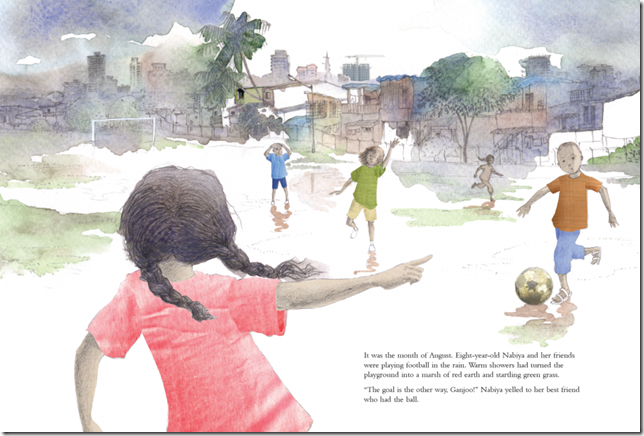
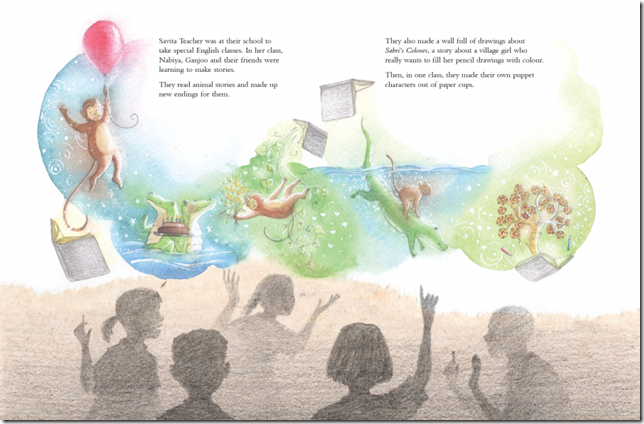
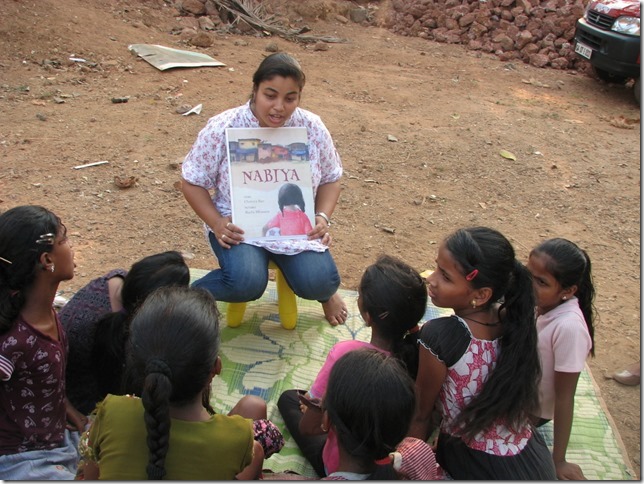
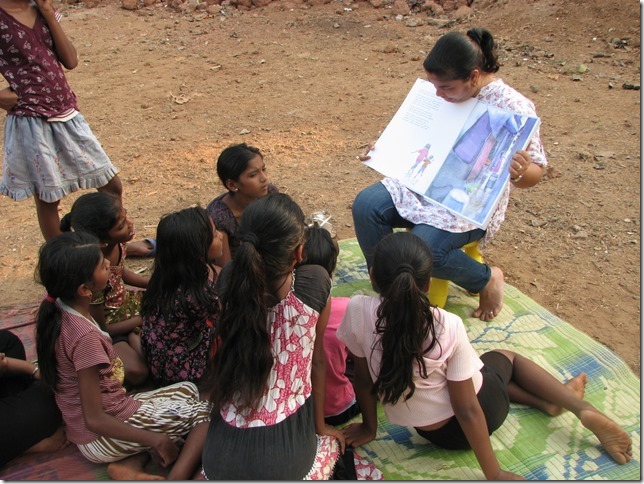
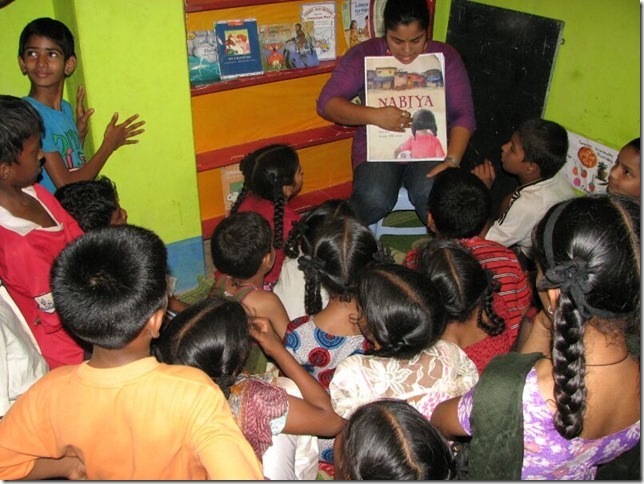
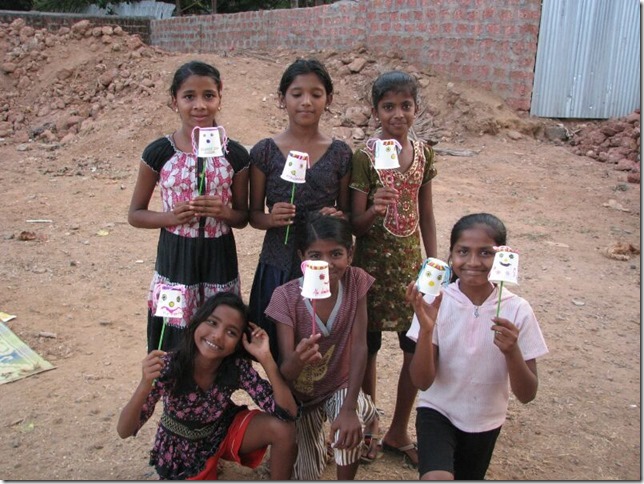
Thanks for a delightful article and for sharing how the children related to the characters. You have made my day! 🙂 Goodluck and hope we see more books about children from every corner reaching these children from every corner through beautiful efforts such as yours!
Thank you so much for sharing our book with your MOP children. When i wrote this story, I almost had no hope anyone would want to really read it… it has no big highs and lows and yes, is flawed in the way atleast two points of view are packed into one. But you brought it to life by sharing it with your children, and have given us the energy to bring forth more such stories. Thank you!